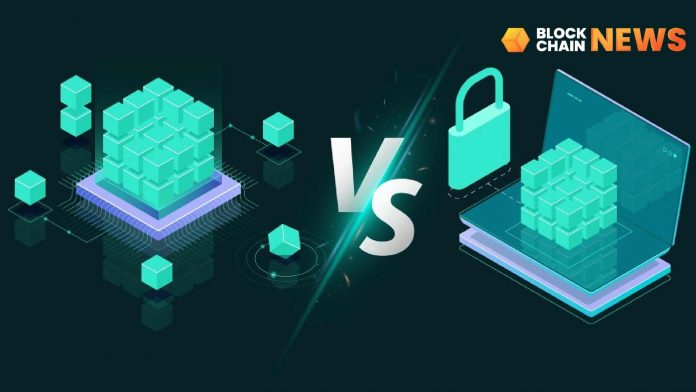On one end of the spectrum, you have Ethereum, a public blockchain that anyone can use to build and launch decentralized applications. On the other end of the spectrum, you have Hyperledger Fabric, a private consortium blockchain where only approved members can join.
What is Public Blockchain?
A public blockchain is a decentralized ledger that anyone can download and write to. Transactions are verified by consensus of the network, and data cannot be erased or modified once written. Public blockchains are open-source; their associated tokens tend to be more accessible and easier to use than those of private blockchains. Bitcoin and Ethereum are examples of public blockchains. A private blockchain is a permissioned ledger where only known; identified participants can access data.
Features of public blockchain
All transactions are public, and the network is maintained by a consensus algorithm rather than a centralized authority. The most popular public blockchain is Bitcoin, which uses a proof-of-work consensus algorithm. Other examples include Ethereum, Litecoin, and Monero. Public blockchains are often permissionless, meaning anyone can join the network and start writing to the ledger. This makes them ideal for applications that need to be accessible to everyone, such as digital currencies. However, public blockchains also have some disadvantages. Because anyone can write to the ledger, they are often subject to spam and malicious attacks.
What is a private Blockchain?
A private blockchain is a distributed ledger that is not open to the public. Instead, it requires an invitation and/or permission to join. Private blockchains are often used within organizations, which may be accessible to everyone or only to specific individuals. The main difference between private and public blockchains is who can access the network and participate in the consensus process. A public blockchain network is open to anyone who wants to join, while a private blockchain network requires an invitation or permission from a central authority.
Features of private blockchain
Private blockchains are permissioned networks that require an invitation or permission to join. Private blockchains also tend to be more centralized than public blockchains. Private blockchains have many of the same features as public blockchains, but there are also some key differences. For instance, private blockchains are typically much smaller in scale than public blockchains. They also tend to be more centralized, with a smaller group of users controlling the network.
Difference between Public and Private blockchain
The critical difference between public and private blockchains is that anyone can join a public blockchain, but only authorized individuals can join a private blockchain. A public blockchain is decentralized, while a private blockchain is centralized. A public blockchain has no access restrictions, while a private blockchain requires an invitation or permission to join. A public blockchain is more secure because it is open to everyone, and anyone can check the code to verify the network’s security. A private blockchain is less secure because it is closed off and only accessible to those with permission.
Conclusion
Public and private blockchains differ regarding security, transparency, and decentralization. Public blockchains are more secure and transparent than private ones but are less decentralized. Private blockchains are more centralized, but they offer less security and transparency.



